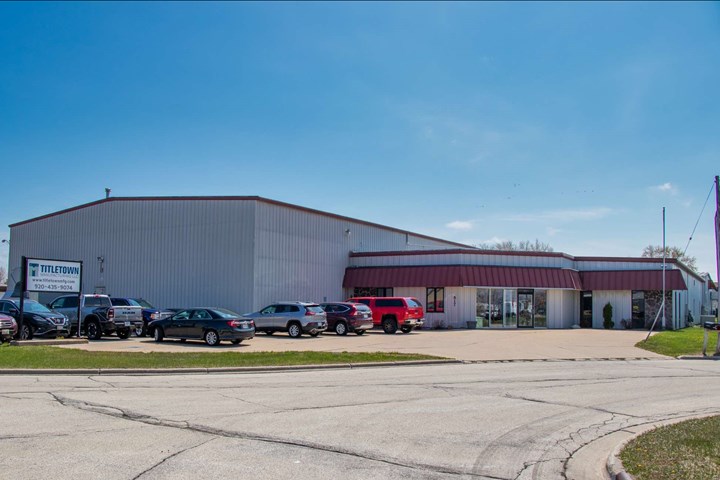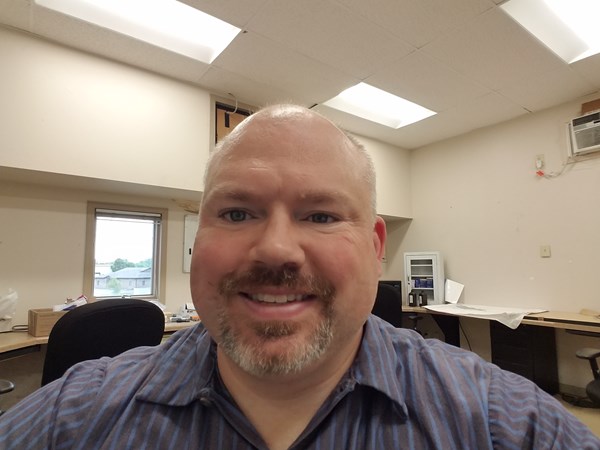One Manufacturer's Trash: Lessons Learned from Moving Facilities
Titletown Manufacturing's operations manager reflects on 13 years in the same facility, the excitement of moving to a new one and finding use for what he thought was trash.
Share






Titletown Manufacturing’s new location. Photos courtesy of Titletown Manufacturing.
After thirteen years of new ownership, Titletown Manufacturing has been fortunate enough to relocate into a new facility. I write this article after reflecting upon my final passes through the building where I have spent the last eight years of my career. What we leave behind is a facility that has been the home to some variant of a machine shop for approximately seven decades. Although I can recall many positive and uplifting memories here, the only reason I am spending this particular day here is to clean up all of the remaining trash. After four weeks of moving, the junk that remains is as unpleasant as it is annoying.
I pan though the largest room in the facility and am in awe; for the first time, I can clearly see all corners of this building. What used to house a saw department and ten pieces of various manufacturing equipment now consists of empty boxes, scattered pallets, garbage/recycling bags and the familiar scent that has been in the air for those last seven decades. Silhouettes of oil dry show faded locations of the layout; a broken window and carefully placed duct tape reveal the fact that there was surely something much more important to work on. This space is poorly lit, and it is hard to see anything but the negative side of its existence. Recalling the many mistakes, scrapped parts, negative personalities and ego-crushing moments of humility come easy; the memories etched like a monument made of stone. Turning my focus back to the task at hand, I am proud that we are upgrading into a larger, modern, climate-controlled building.
The comfortable feeling of a new shop fades quickly as the pile of “what do I do with this?” keeps growing. Although unfinished with my task, I get bored and decide to look at what is left outside. I rearrange a few stray pallets on the ground and stumble upon something I have not seen in a few years; a scrapped lathe part, only half visible in the earth, sits embedded like a hidden tombstone from the 1800s. Although I cannot recall exactly what feature it was that caused this behemoth to be scrapped, memory recalls that it had to do with one of the large, grooved locations. In addition to this, I am reminded of just how costly this error was; the finish turning and hob work, although rusted, still look as if they could be polished to an acceptable finish. A rookie mistake resulted in its final resting place; the novice forklift driver had taken it to the scrap area and, in doing so, drove the forklift on some soggy spring grass. The forklift became stuck, and freeing it took a few days and a wrecker to persuade, the large shaft a distant memory. I step back to the present when a sudden headache sets in.
Even in a world of self-gratification, it is easy to dwell on negatives. We dwell on disappointments when the positives are not tangible. Even though we are moving into a modern shop with twice the amount of square footage, this high-priced anchor of failure leaves a huge impression. Not only is it sitting heavily on the earth but it also feels like its thousand-plus-pound weight is on my shoulders. Even though all of the hard work, sweat and time has resulted in something we at Titletown should all be proud of, I cannot get past one of the largest failures staring directly at my face. As I left for the day, I wonder if we will have to move the large roll and, if so, how we would do it?
The next day we had a briefing with our management team at our new facility. We discussed many aspects of the move and eventually, at the end, wound up talking about the large roll. Reminiscing what we now found funny, the scrapped roll and a stuck forklift was becoming a memory of past failures and what to avoid. As it would turn out, laughing and talking about this catastrophe birthed the start of a new opportunity.

This scrapped lathe part, once buried in the mud and forgotten, turned out to be key for a future project.
It was less than one week before we had our next production meeting. At this meeting, it was revealed that one of our best customers, impressed by our move and recently improved capabilities, gave us the opportunity to take on a special project for them. This endeavor, which requires the manufacturing and assembly of half a dozen components, has a tolerance that will require us to mill, turn and grind all of the components to a runout tolerance of no greater than two-thousandths of an inch. Although we regularly achieve tolerances like this, this particular job needs multiple parts to be interchangeable. By rotating and the position of the components, the end product becomes a modular machine capable of making a variety of products. It was determined that, in order to turn and grind the components, we need to invest in dedicated fixturing. What would this dedicated fixture require? One large shaft.
We have all heard the proverbial saying that “one man’s trash is another’s treasure.” Up until the production meeting, I would have argued against that. After doing some calling around, we found someone close with a tractor to get the shaft out of the ground. Looks like I will be making another trip to the old shop after all.
About the Contributor
Tim Sanders
Tim Sanders is the operations manager at Titletown Manufacturing in Green Bay, Wisconsin. Sanders has been with Titletown for eight years. His career spans 20 years of manufacturing, machining and managing.
Read Next
5 Rules of Thumb for Buying CNC Machine Tools
Use these tips to carefully plan your machine tool purchases and to avoid regretting your decision later.
Read MoreBuilding Out a Foundation for Student Machinists
Autodesk and Haas have teamed up to produce an introductory course for students that covers the basics of CAD, CAM and CNC while providing them with a portfolio part.
Read MoreSetting Up the Building Blocks for a Digital Factory
Woodward Inc. spent over a year developing an API to connect machines to its digital factory. Caron Engineering’s MiConnect has cut most of this process while also granting the shop greater access to machine information.
Read More


























.jpg;maxWidth=970;quality=90)